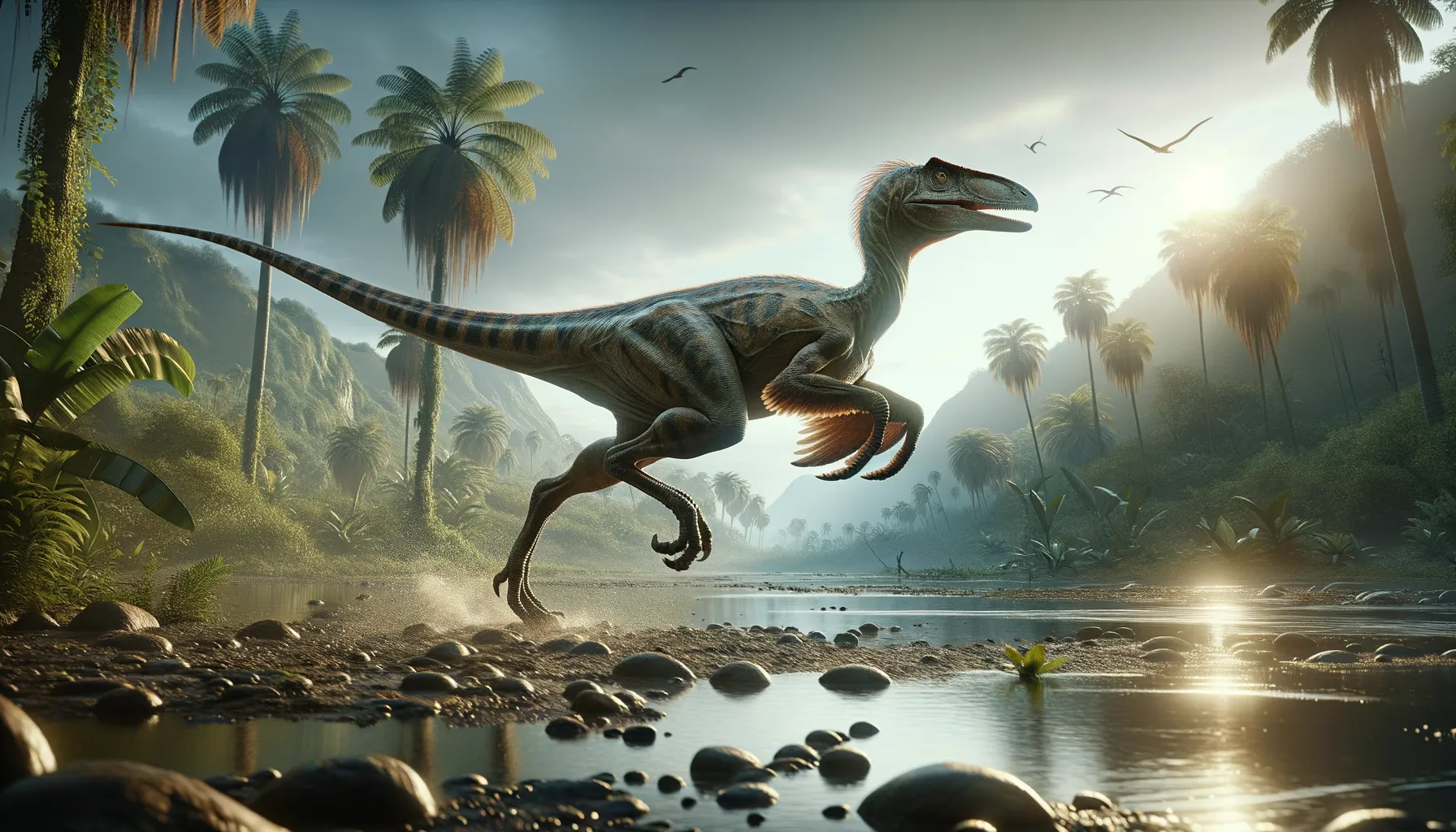
Panguraptor
Swift survivor of the ancient lands.
Period
Cretaceous
Length
Roughly 2.5 meters long.
Height
Stood around 1.2 meters tall.
Weight
Approximately 25-40 kilograms.
Panguraptor was a nimble, bird-like dinosaur known for its agile movements and light build. It roamed what is modern-day Asia during the Cretaceous period, displaying features that hint at a close relationship with early birds. With a relatively small stature, it had a sleek body built for speed and agility, which helped it survive in a challenging environment.
Diet
Panguraptor was likely an omnivore, feeding on small animals, insects, and possibly plant matter. Its sharp teeth suggest it had a preference for meat, making it an adept hunter of small prey.
Hunting
This dinosaur was probably a solitary hunter, relying on its speed and stealth to catch prey. It may have ambushed small animals and used its quick reflexes to secure meals.
Environmental challenges
During the Cretaceous period, Panguraptor faced significant challenges such as fluctuating temperatures and volcanic activity. Predators and competition for food also posed a threat, requiring keen senses and adaptability for survival. Water sources might have been scarce in drier periods, making resourcefulness crucial for maintaining hydration.
Speed
Moderately fast, comparable to a large bird.
Lifespan
Estimated to live around 15-20 years.
First discovery
Discovered in a shale formation in China in the early 2000s.
Fun Facts
- Panguraptor was a small dinosaur believed to have lived around 125 million years ago during the early Cretaceous period.
- Despite its small size, Panguraptor had sharp teeth and likely preyed on small animals and insects.
- Fossils of Panguraptor suggest it was a fast and agile runner, helping it escape predators and catch prey.
- Panguraptor had feathers, which might have been used for display, insulation, or aiding in balance while running.
- The name Panguraptor means 'Claw Thief,' referring to its sharp claws used for hunting and defense.
- Panguraptor is a relatively new discovery, adding to our understanding of dinosaur diversity in Asia.
- It is part of the dromaeosaurid family, which also includes the famous Velociraptor known from movies.
Growth and Development
Panguraptor likely experienced rapid growth early in life, reaching full size in just a few years. Developmental stages would have required secure nesting areas to protect young from predators. As it matured, its diet expanded, allowing it to exploit different food sources.
Habitat
Panguraptor inhabited lush forests and open plains, where it could blend into the environment. The diversity of its habitat allowed access to various food sources, supporting its versatile diet. Seasonal changes would have influenced its movement patterns within its territory.
Interaction with other species
Panguraptor likely encountered other small dinosaurs and mammals, often competing for resources. It may have engaged in opportunistic scavenging in addition to active hunting. Social interactions within its species were probably minimal, focusing more on territoriality.
Natural lifespan
In ideal conditions, it could live up to about two decades.
Reproduction
Reproductive behavior likely included egg-laying, with nests built in secure, hidden locations. Parents may have guarded nests, though post-hatchling care was probably limited. Clutches could consist of several eggs, ensuring survival despite predation pressures.
Social behaviour
Panguraptor was possibly a solitary creature, except during mating seasons. Territorial disputes could occur, especially among males, mediated by display and vocalizations. Little evidence suggests complex social structures.
Fossil locations
Fossils have primarily been found in northeastern China, particularly in Liaoning Province. These sites have provided well-preserved specimens, offering insights into its anatomy and lifestyle. The region's paleoenvironment was diverse, hinting at its adaptability to various conditions.
